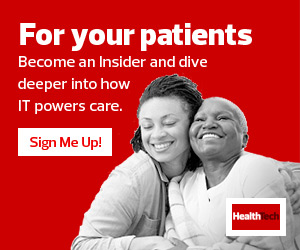Dr. Benton Kilman, chief medical informatics officer for North Mississippi Health Services
Before it could start addressing the challenges, Kilman says, NMHS had to upgrade the wired and wireless network infrastructure at its facilities, which it accomplished in only three months. Then it could start getting creative, enabling solutions that would even allow practitioners to visit hospital patients from home using a mobile device.
“This is an industry that was slowly but surely acknowledging the benefits of IT,” says Mutaz Shegewi, IDC’s research director for worldwide provider IT transformation strategies. “Then, in a very short window of opportunity, two years of digital transformation happened over a period of two months. It was very inspiring. Now, many are looking at what they’ve done and saying, ‘Let’s keep certain things in place; let’s maintain the benefits of our efforts.’”
Fine-Tuning for Remote Work
Indeed, different healthcare providers took different journeys to a point where they can be strategic in how they deploy mobility solutions and telehealth. Some were early adopters of enabling technology; others were forced to act quickly. In both cases, providers have learned what works best for their organizations and begun to fine-tune their mobility strategies.
St. John’s Health, a regional medical system based in Jackson, Wyo., had already adopted VMware Workspace ONE for remote access to applications, virtual desktop infrastructure services and unified endpoint management. Originally, St. John’s embraced Workspace ONE, in part, to tap a pool of back-office workers outside the Jackson area. Over the past year, the solution allowed the provider to rapidly deploy zero-client PCs to newly remote workers and provision hundreds of Apple iPad devices for telehealth services.
READ MORE: How to protect data in a shifting security landscape.
“The VDI solution is easier to support than 600 different devices,” says Roger Perkins, executive director of IT at St. John’s Health. “We’re now more of a one-stop shop, in that we can make updates and patch programs, test everything and then roll it out to all staff at the same time.”
But, while VDI supports widespread mobility, St. John’s Health learned that it is not a one-size-fits-all solution to the challenges of remote work. In many cases, a full-blown VDI session is not necessary, Perkins explains, so St. John’s has begun to make individual applications available through Workspace ONE.
“Now we’re able to push out applications directly,” Perkins says. “For example, a physician may not want to jump all the way into a virtual desktop to access our EMR. Now they’re able to jump into Workspace ONE, access their application and run it, and they don’t have to take a bunch of extra steps. We were trying to make their lives easier and more efficient, which also helps support our patients.”
Improving the Mobile User Experience
Sentara Healthcare, which operates 12 hospitals serving communities in Virginia, North Carolina and Ohio, increased the availability of Microsoft Windows Virtual Desktop in response to the pandemic, while also supporting workers who only needed secure, authenticated access to certain IT services. Sentara acquired and deployed thousands of managed laptops when the pandemic began, using BeyondTrust privileged access management and Cisco Duo multifactor authentication technology to secure all devices accessing its resources. Because the transition was rapid, Sentara erred on the side of extreme risk mitigation.
“Configuration management and standards are critical, so when the team set up virtualized desktops, they dug through every setting to determine what we were going to allow,” says Dan Bowden, CISO at Sentara Healthcare. “Are we going to allow people to print? If so, who, and is that an exception or a default? We had to be willing to dig through every setting to determine maximum protection.”
As Sentara begins transitioning to its new normal, Bowden says, it’s clear some employees will work remotely full time. Therefore, the provider is now also focusing on user experience across its mobile environment.












